Maltagliati are an irregularly flat, roughly cut pieces of egg-and-flour pasta native to Emilia-Romagna(Italian region). The name of this pasta literally means “badly cut,” a reference to the crazy and irregular shapes that can be found in a package of maltagliati. Sugo di pomodoro fresco is just the ordinary tomato sauce made with fresh tomatoes.
Italian kitchen is basically very simple, not very spicey and this is why it is one of the most healthy ones;). The only secret is to have the best ingredients you can find and it's how you will have that great, rich Mediterranean taste;)

So this is the recipe for one just ordinary Italian plate, very diffused and eaten very often in Italy. Of course, you can always allow your cooking creativity a breakthrough, adding some other ingredients with the sauce like meat balls, veggies or similar.
Long-simmered tomato sauce is delicious any time of year. The benefits of extended cooking time are that the sauce thickens as the water cooks out, and the flavors meld together the longer they simmer. Any other vegetables you have added to the sauce will become richer and sweeter the longer they cook.
In my
previous post, I explained how to make the home made tomato sauce , even that the procedure explained is something not worth to do when preparing just one meal, so this is the best way to make the sauce needed for one serving/meal only;)

INGREDIENTS FOR THE TOMATO SAUCE:
a few spoons of Italian extra virgin olive oil
1 kg tomatoes (when fresh tomatoes are out of season, it's perfectly fine to use canned tomatoes for this recipe as well, just avoid the 1 and 2 rows)
1 onion, cut in 2 pieces (this will add the additional sweetness to the sauce and you can throw it away from the sauce once it is cooked, as well as the garlic;)
4 cloves garlic (whole)
1 tea spoon of sugar
1 tea spoon of salt
minced pepper to taste
a few fresh basil leaves
So, I suggest doing this:
1. wash the tomatoes, and place them in the hot boiling water(in some cooking pot)for about 2 minutes, or until theirs surface-husk starts to hull, like in the photo above.
2. peel them
3. mince them in food or juice processor or just cut them;)
4. to cook sauce, heat olive oil over medium heat in a large cast iron skillet or heavy saucepan
5. add garlic and cook until tender
6. add the tomatoes and the rest of the ingredients
7. cook for about 30 minutes in mild flame, occasionally stir of course;)

After that the sauce is done, try it of course and see if you need any additional salt added or remove the garlic if don't like to find it in your mouth,lol.
Now, you can add some other thing in it like peppers for example(put a few peppers in a large frying pan over a medium heat with a little olive oil and a pinch of salt and pepper. Place a lid on, and cook slowly for 15 minutes until softened. Don't rush this too much, as cooking the peppers slowly like this really helps to bring out the flavour)and have the "pasta peperonata"
INGREDIENTS FOR PASTA:
The recipe is very simple, for each person:
· 1 medium egg
· 100 g. flour mix(half semolina and half fine-normal flour)
· 1 tablespoon Olive Oil
· 1 tablespoon water
So, if you are making the pasta for 5 person, you just need to put 5 eggs, 500g flour etc....
Home made pasta has a unique taste not found in any store-bought varieties, whether fresh or dried. Most commercially made pasta is prepared with semolina of durum wheat. Semolina is the purified heart of Durum wheat. Durum wheat produces a highly glutenous flour used to make pasta around the world.
Durum wheat is used in pasta because it will not break down in the cooking process as fast as normal flour. The resulting pasta will have greater consistency.
Semolina is slightly larger grind than flour and will take longer to absorb any liquids. The type of flour used to make the pasta will modify the process and the time involved. Also the way the pasta will be rolled and cut will change the type or mix of flour that you will use.If you can't find the semolina flour, use the normal flour.

Start with a large, clean work surface. Make a mound of the flour and salt with a well in the middle.
Add the eggs to the well, and start stirring with a fork, slowly incorporating all the flour until the dough comes together.
Knead the dough until it is soft and pliable. This might take several minutes.

Kneading the dough creates the important gluten structure that holds the pasta together. Using a stand mixer with a dough hook simplifies the process: just add the ingredients and mix. Kneading by hand takes more effort, but is still quite enjoyable (and a good workout). If the dough still feels sticky, knead it by hand, adding semolina to the dough as you knead.

When you can set the dough on a clean counter top without sticking, the dough is ready to be shaped. Depending on the grind of your semolina, the dough might not be as smooth as it would be with a finer flour-based dough.Tightly wrap the pasta dough in plastic and let it sit at room temperature for about an hour to give the gluten a chance to relax. This makes it easier to work with and will keep the dough from shrinking and snapping back as you stretch it.

Rolling with a Pasta-Rolling Machine
Pasta-rolling machines, as opposed to pasta-making machines, are hand-cranked or electric rollers that roll thin the pasta previously made by hand or in an electric mixer. They are widely available, not expensive, and worth having. The rolling process continues, in a fashion, the kneading process, meaning that you need to knead less than when doing everything by hand.
Unwrap the resting pasta dough and push down with your hand. With a rolling pin continue rolling until the dough is about 12 inches in diameter. Divide in thirds, covering two-thirds with the wax paper or plastic wrap. Take the remaining third and roll it through the widest setting of the roller. After reducing by another notch and rolling it through, fold in thirds so you have a nicely shaped rectangle. Reduce the setting another notch and continue rolling, ratcheting down the roller until you have your desired thickness. As you roll remember to flour both sides at the slightest sign of stickiness.

Rolling the Pasta Dough by Hand
You must be a complete fanatic to want to roll pasta by hand. It's a pain in the neck and I can't see the point of struggling with a rolling pin when a pasta roller machine will do the job, unless of course you are following the "therapeutic" concept above. Should you wish to roll the dough by hand you need a long (at least 24-inches) rolling pin called a mattarello , rather than the standard rolling pin with handles. Dust the work surface with flour and flatten the ball of dough with the palm of your hand. Start rolling away from you. Rotate and roll. Rotate and roll continuing in this manner so the dough is circular. Continue rolling until the dough is very thin, about 1/16-inch.
At this point the dough needs to be stretched (a job the pasta rolling machine does magnificently). Place the rolling pin at the top of the circle of dough--at 12 o'clock if it were a clock face. Make sure the dough is dusted with flour. Grab the very tip of the dough and pull it over the rolling pin. Roll the pin toward you until you reach the 10 o'clock-2 o'clock line. Place the palms of both hands together in the center of the rolling pin and press down hard, rolling back and forth as your hands travel to the outer edge of the rolling pin, as when you made snakes with play dough as a child. Do this three times. Now roll another half of the dough up and repeat. Unroll the dough and turn it around so the 6 o'clock position is now at 12 o'clock. Repeat the rolling process again. Do this entire process about 4 times, making sure you dust with flour.

Cutting the pasta
In a large baking tray spread some flour. Cut the pasta into your desired shape -in this case just make some randomly triagonal -tubular like shapes- this type of pasta perfectly allow your kids to cut it in any form they can/like. Drag the larger pasta shapes in the flour to dust and set aside at one end of the tray while you continue rolling and cutting. Dust all pasta with flour as you make it so it doesn't stick together. Remember--always dust with flour. Otherwise the pasta may become hopelessly stuck together . Arrange the cut pieces of pasta on paper or kitchen towels or a white sheet to dry until you place the pan with water to boil.
Now you just need to cook them for a few minutes (around 5 , depending on a thickness of the rolled pasta) in the salted boiling water and try if they are cooked before straining the water;).
Now just mix the pasta with the sauce, spread a bit of Parmesan cheese on the top and some Basil leaves and flowers(if you have) for the decoration;)

Buon apettito!!!
Maltagliati are an irregularly flat, roughly cut pieces of egg-and-flour pasta native to Emilia-Romagna(Italian region). The name of this pasta literally means “badly cut,” a reference to the crazy and irregular shapes that can be found in a package of maltagliati. Sugo di pomodoro fresco is just the ordinary tomato sauce made with fresh tomatoes.
Italian kitchen is basically very simple, not very spicey and this is why it is one of the most healthy ones;). The only secret is to have the best ingredients you can find and it's how you will have that great, rich Mediterranean taste;)

So this is the recipe for one just ordinary Italian plate, very diffused and eaten very often in Italy. Of course, you can always allow your cooking creativity a breakthrough, adding some other ingredients with the sauce like meat balls, veggies or similar.
Long-simmered tomato sauce is delicious any time of year. The benefits of extended cooking time are that the sauce thickens as the water cooks out, and the flavors meld together the longer they simmer. Any other vegetables you have added to the sauce will become richer and sweeter the longer they cook.
In my
previous post, I explained how to make the home made tomato sauce , even that the procedure explained is something not worth to do when preparing just one meal, so this is the best way to make the sauce needed for one serving/meal only;)

INGREDIENTS FOR THE TOMATO SAUCE:
a few spoons of Italian extra virgin olive oil
1 kg tomatoes (when fresh tomatoes are out of season, it's perfectly fine to use canned tomatoes for this recipe as well, just avoid the 1 and 2 rows)
1 onion, cut in 2 pieces (this will add the additional sweetness to the sauce and you can throw it away from the sauce once it is cooked, as well as the garlic;)
4 cloves garlic (whole)
1 tea spoon of sugar
1 tea spoon of salt
minced pepper to taste
a few fresh basil leaves
So, I suggest doing this:
1. wash the tomatoes, and place them in the hot boiling water(in some cooking pot)for about 2 minutes, or until theirs surface-husk starts to hull, like in the photo above.
2. peel them
3. mince them in food or juice processor or just cut them;)
4. to cook sauce, heat olive oil over medium heat in a large cast iron skillet or heavy saucepan
5. add garlic and cook until tender
6. add the tomatoes and the rest of the ingredients
7. cook for about 30 minutes in mild flame, occasionally stir of course;)

After that the sauce is done, try it of course and see if you need any additional salt added or remove the garlic if don't like to find it in your mouth,lol.
Now, you can add some other thing in it like peppers for example(put a few peppers in a large frying pan over a medium heat with a little olive oil and a pinch of salt and pepper. Place a lid on, and cook slowly for 15 minutes until softened. Don't rush this too much, as cooking the peppers slowly like this really helps to bring out the flavour)and have the "pasta peperonata"
INGREDIENTS FOR PASTA:
The recipe is very simple, for each person:
· 1 medium egg
· 100 g. flour mix(half semolina and half fine-normal flour)
· 1 tablespoon Olive Oil
· 1 tablespoon water
So, if you are making the pasta for 5 person, you just need to put 5 eggs, 500g flour etc....
Home made pasta has a unique taste not found in any store-bought varieties, whether fresh or dried. Most commercially made pasta is prepared with semolina of durum wheat. Semolina is the purified heart of Durum wheat. Durum wheat produces a highly glutenous flour used to make pasta around the world.
Durum wheat is used in pasta because it will not break down in the cooking process as fast as normal flour. The resulting pasta will have greater consistency.
Semolina is slightly larger grind than flour and will take longer to absorb any liquids. The type of flour used to make the pasta will modify the process and the time involved. Also the way the pasta will be rolled and cut will change the type or mix of flour that you will use.If you can't find the semolina flour, use the normal flour.

Start with a large, clean work surface. Make a mound of the flour and salt with a well in the middle.
Add the eggs to the well, and start stirring with a fork, slowly incorporating all the flour until the dough comes together.
Knead the dough until it is soft and pliable. This might take several minutes.

Kneading the dough creates the important gluten structure that holds the pasta together. Using a stand mixer with a dough hook simplifies the process: just add the ingredients and mix. Kneading by hand takes more effort, but is still quite enjoyable (and a good workout). If the dough still feels sticky, knead it by hand, adding semolina to the dough as you knead.

When you can set the dough on a clean counter top without sticking, the dough is ready to be shaped. Depending on the grind of your semolina, the dough might not be as smooth as it would be with a finer flour-based dough.Tightly wrap the pasta dough in plastic and let it sit at room temperature for about an hour to give the gluten a chance to relax. This makes it easier to work with and will keep the dough from shrinking and snapping back as you stretch it.

Rolling with a Pasta-Rolling Machine
Pasta-rolling machines, as opposed to pasta-making machines, are hand-cranked or electric rollers that roll thin the pasta previously made by hand or in an electric mixer. They are widely available, not expensive, and worth having. The rolling process continues, in a fashion, the kneading process, meaning that you need to knead less than when doing everything by hand.
Unwrap the resting pasta dough and push down with your hand. With a rolling pin continue rolling until the dough is about 12 inches in diameter. Divide in thirds, covering two-thirds with the wax paper or plastic wrap. Take the remaining third and roll it through the widest setting of the roller. After reducing by another notch and rolling it through, fold in thirds so you have a nicely shaped rectangle. Reduce the setting another notch and continue rolling, ratcheting down the roller until you have your desired thickness. As you roll remember to flour both sides at the slightest sign of stickiness.

Rolling the Pasta Dough by Hand
You must be a complete fanatic to want to roll pasta by hand. It's a pain in the neck and I can't see the point of struggling with a rolling pin when a pasta roller machine will do the job, unless of course you are following the "therapeutic" concept above. Should you wish to roll the dough by hand you need a long (at least 24-inches) rolling pin called a mattarello , rather than the standard rolling pin with handles. Dust the work surface with flour and flatten the ball of dough with the palm of your hand. Start rolling away from you. Rotate and roll. Rotate and roll continuing in this manner so the dough is circular. Continue rolling until the dough is very thin, about 1/16-inch.
At this point the dough needs to be stretched (a job the pasta rolling machine does magnificently). Place the rolling pin at the top of the circle of dough--at 12 o'clock if it were a clock face. Make sure the dough is dusted with flour. Grab the very tip of the dough and pull it over the rolling pin. Roll the pin toward you until you reach the 10 o'clock-2 o'clock line. Place the palms of both hands together in the center of the rolling pin and press down hard, rolling back and forth as your hands travel to the outer edge of the rolling pin, as when you made snakes with play dough as a child. Do this three times. Now roll another half of the dough up and repeat. Unroll the dough and turn it around so the 6 o'clock position is now at 12 o'clock. Repeat the rolling process again. Do this entire process about 4 times, making sure you dust with flour.

Cutting the pasta
In a large baking tray spread some flour. Cut the pasta into your desired shape -in this case just make some randomly triagonal -tubular like shapes- this type of pasta perfectly allow your kids to cut it in any form they can/like. Drag the larger pasta shapes in the flour to dust and set aside at one end of the tray while you continue rolling and cutting. Dust all pasta with flour as you make it so it doesn't stick together. Remember--always dust with flour. Otherwise the pasta may become hopelessly stuck together . Arrange the cut pieces of pasta on paper or kitchen towels or a white sheet to dry until you place the pan with water to boil.
Now you just need to cook them for a few minutes (around 5 , depending on a thickness of the rolled pasta) in the salted boiling water and try if they are cooked before straining the water;).
Now just mix the pasta with the sauce, spread a bit of Parmesan cheese on the top and some Basil leaves and flowers(if you have) for the decoration;)

Buon apettito!!!

 After that the sauce is done, try it of course and see if you need any additional salt added or remove the garlic if don't like to find it in your mouth,lol.
After that the sauce is done, try it of course and see if you need any additional salt added or remove the garlic if don't like to find it in your mouth,lol. Start with a large, clean work surface. Make a mound of the flour and salt with a well in the middle.
Start with a large, clean work surface. Make a mound of the flour and salt with a well in the middle.































 GRID
GRID
 DECADENCE
DECADENCE








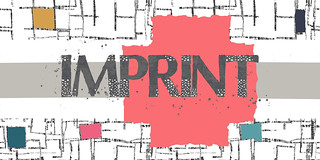










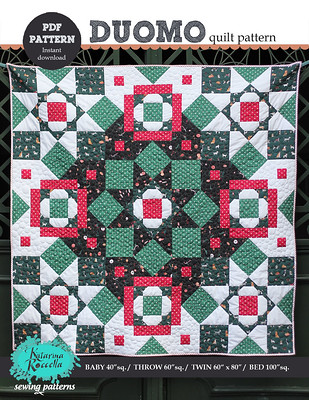








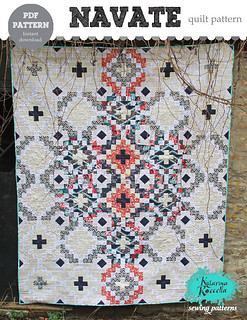




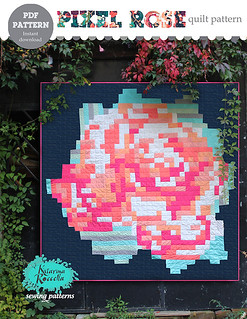

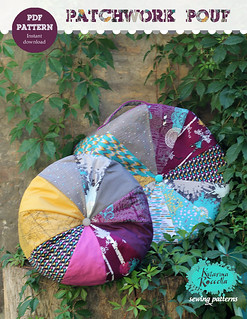





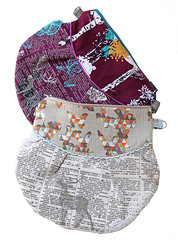











2 comments :
Oooh that looks delicious. I need a pasta press so I can try the recipe out!
Did you know you can create short urls with AdFly and receive $$$$$ for every click on your short links.
Post a Comment